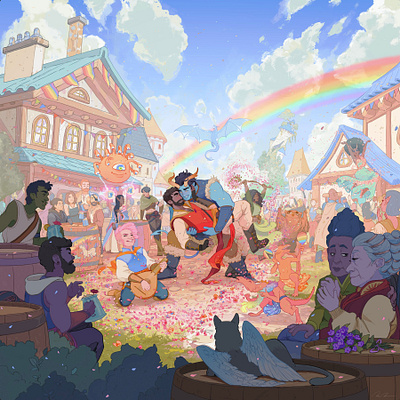Indeed, ladies have been made pregnant by securing fresh semen from some man and injecting it into the vagina with an unusual female syringe! Of those, the Isle of Wight is the great metropolis of the insect, and there, in many places round the coast, numerous colonies have been established. Additionally it is discovered near Brighton (plentifully); Carlisle; Durham; Burton-on-Trent; York; Haverfordwest, S. W.; Cardiff, S. W.; Weston-super-Mare; Bristol; and a large number of different places distributed throughout the nation. Though often quite plentiful where it happens in any respect, this insect is some of the local of all our butterflies, and that i can solely find recorded a couple of dozen places for it within the country. The almost certainly locations by which to look for it are clover fields within the south of England, and more especially on the south-east coast. The butterfly seems in July, in many open locations, in woods, and on heaths, in various elements of England, but most plentifully in the south.
 The butterfly is out in July and part of August, and may be seen in quite a lot of conditions, from the breezy tops of heathy downs, to close-grown forest-lands within the valleys; and it seems to be distributed over the entire of the country, occurring in extensively distant localities, from the south coast to Scotland. This butterfly is distinguished from the subsequent (M. The butterfly appears first in May, and there’s one other brood in autumn, about August. And if you do that, then you definitely recognize that there are some essential parallels between intercourse work and different personal companies. Because the embryos that give rise to strange twins are subjected to virtually the identical situations during their uterine life, and are sometimes, as has been mentioned, a male and a feminine in a pair, it follows that in man the exterior circumstances that affect the egg, after it has left the ovary or after it has been fertilized, don’t decide the sex.
The butterfly is out in July and part of August, and may be seen in quite a lot of conditions, from the breezy tops of heathy downs, to close-grown forest-lands within the valleys; and it seems to be distributed over the entire of the country, occurring in extensively distant localities, from the south coast to Scotland. This butterfly is distinguished from the subsequent (M. The butterfly appears first in May, and there’s one other brood in autumn, about August. And if you do that, then you definitely recognize that there are some essential parallels between intercourse work and different personal companies. Because the embryos that give rise to strange twins are subjected to virtually the identical situations during their uterine life, and are sometimes, as has been mentioned, a male and a feminine in a pair, it follows that in man the exterior circumstances that affect the egg, after it has left the ovary or after it has been fertilized, don’t decide the sex.
 The black markings on the higher aspect of this butterfly closely method these of the final two species, however the interstices, instead of being crammed up with a uniform fulvous tint, as in those, are “coloured in” with several distinct shades, some with pale tawny yellow, others with deep orange brown. The butterfly is out from May to July, and is met with (if at all) on heaths, clearings in woods, &c. By evaluating the figures of the beneath sides of Adippe and Aglaia, these might be readily made out. When figured side by facet with the opposite Fritillaries, this species seems to be distinct sufficient from any of them; however it has been a number of occasions confounded with small specimens of Adippe and with Euphrosyne, and its seize has thereupon been erroneously revealed; however this will need to have been the effect of a description imperfectly written or learn. This very common insect is significantly smaller than any of the previous species, though small specimens of the last generally do not a lot exceed it in size. THE SMALL PEARL-BORDERED FRITILLARY.
The black markings on the higher aspect of this butterfly closely method these of the final two species, however the interstices, instead of being crammed up with a uniform fulvous tint, as in those, are “coloured in” with several distinct shades, some with pale tawny yellow, others with deep orange brown. The butterfly is out from May to July, and is met with (if at all) on heaths, clearings in woods, &c. By evaluating the figures of the beneath sides of Adippe and Aglaia, these might be readily made out. When figured side by facet with the opposite Fritillaries, this species seems to be distinct sufficient from any of them; however it has been a number of occasions confounded with small specimens of Adippe and with Euphrosyne, and its seize has thereupon been erroneously revealed; however this will need to have been the effect of a description imperfectly written or learn. This very common insect is significantly smaller than any of the previous species, though small specimens of the last generally do not a lot exceed it in size. THE SMALL PEARL-BORDERED FRITILLARY.
THE QUEEN OF SPAIN FRITILLARY. THE GREASY OR MARSH FRITILLARY. The chrysalis is tinted with dull-inexperienced and brown, and spotted with gold. The caterpillar is brown, striped with white, and yellowish tint; head, legs, and thorns, tawny coloured. The caterpillar is black, with rust-colored spines; and feeds on various species of plantain. Along with the silver border and central spots of Euphrosyne, this species has a number of different silvery or pearly patches distributed over the hind wing; and the reddish-orange colour adjoining the silver border in Euphrosyne is exchanged for darkish chestnut-brown in Selene. The inside nook of the hind wings is also extra sharply angular. Above, the colouring of the wings is much like that of the others of the genus, tawny-brown and black. The colouring of the higher facet is orange-brown with black markings. It may be characterised negatively as not having the rows of black spots found on each surfaces of Cinxia, although its colouring may be very related-fulvous (or orange-brown) and black above; straw-coloured, fulvous, and black beneath.